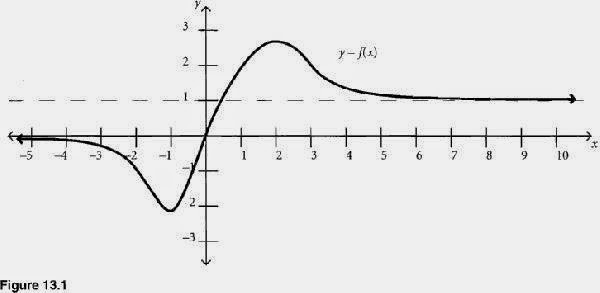This post continues from here.
Thanks for waiting. So, we were talking about this:
this sentence in particular:
He focused on the high end of his intellect, solving unprovable theorems with large cardinals and composing an ending for Schubert's unfinished Symphony N° 8.
and we were trying to understand what it means "
solving unprovable theorems with large cardinals". In the previous post I introduced
large cardinals (
seriously, if you haven't read it, do it now, otherwise it's going to be hard). Now we go back in time, to
the beginning of the 20th century, deep in the paradox.
Mathematics, like art, politics, physics,
was in a horrible crisis. There was the legitimate doubt that all mathematics was in fact a house of cards. Everything could collapse any minute: people just realized that
the math building had no foundation. You know when you are having a deep and meaningful conversation with your friend, but suddenly there is that awkward moment when you realize you were talking about the
Isis, and he was talking about
recliners (you've got to chill out, dude, it's ok to hate them but not
that much)? Or when you are well into adulthood, and you realize that all the choices your life is based on where made when you were too much young and immature, and now you are completely disconnected to what once had meaning to you, and it is too late too change, you are trapped in a cage of sorrow build by yourself where you can just float through your meaningless life until OH MY GOD STOP IT THIS IS TOO DEPRESSING.
Yep, mathematics was in a middle age crisis.
It works like this:
What is a triangle? A
polygon with three edges and three vertices.
What is a polygon? A
plane figure that is bounded by a finite chain of straight line segments closing in a loop to form a closed chain or circuit.
What is a plane? A flat,
two-dimensional surface.
What is a dimension of an object? The minimum number of coordinates needed to specify any
point within it.
What is a point? Ehm... something with no dimensions? No, we defined dimension using points. Then... What?
You can understand how, in a subject like mathematics that strives to be as objective as possible,
the lack of well-defined basic notions was problematic. Before that, they were satisfied with
primitive notions, but with the current level of sophistication it was not enough.
Hilbert tried to solve this with a collective effort: let's write down a list of things we know for sure are true, and such that all the results of mathematics can be proved from those. If something make all the people say "Duh", then it is a right starting point.
This is how we came up with
ZFC: a list of nine trivial sentences (like: two sets are the same if they have the same elements. Duh), that form the basis of all ordinary mathematics. Of course there are fringes who don't like it: some people want to drop the C and have ZF, others want ZC or just
Z, others prefer
KFC, some guy prefers
NBG, or
KP. Oh, and what about
New Foundations? It's a mess, but we can say that the majority of people consider ZFC=mathematics.
But then
Gödel (25 years old) came and said: careful! Whatever sentences you choose, there will be always mathematical statements that are unprovable, outside the scope of logic! So paradoxical!
So this is how one can say that something is unprovable in ordinary mathematics: it just cannot be proved from those nine sentences.
And here come the large cardinals! What if we add to the nine sentences a tenth sentence, like,
there exists an inaccessible cardinal.
Then we can prove more stuff! Remember: large cardinals are unprovable in ordinary mathematics, so we are adding something genuinely new! But then... something that before was unprovable, now it's provable, using large cardinals! Yay!
Has it ever happened? It happens every day. The most famous (but controversial) case is
Fermat's Last Theorem. When Andrew Wiles proved it, he became a superstar: he was mentioned in Star Trek: Deep Space Nine, in Stieg Larsson's The Girl Who Played with Fire, and a jeans company asked him to pose for an advertisement (he turned it down, unfortunately). Well, the proof uses
Grothendieck Universe, and you cannot have a Grothendieck Universe without an inaccessible cardinal. So yes, Wiles used a large cardinal. It is controversial, because many mathematicians claim that it is not necessary to use it, that it is possible to change the proof and avoid it, so maybe Fermat's Last Theorem
is provable. (This is granted to start a flame war).
But there are many other technical results that we know need large cardinals. Also, we have many large cardinals, not just inaccessible, and they are stronger and stronger, therefore lead to more and more mathematical results that are not provable in ordinary mathematics. They have also funny names (I am talking to you,
ineffable cardinals), so
I'll end with a (partial) list of them completely without context for your amusement, from the weakest to the strongest:
Zero pistol
Icarus sets
So, good job, Artemis! If the problem you're thinking of is unprovable, then using large cardinals is the most sensible thing you can do. Start with an inaccessible cardinal, and if it is not enough, go up up up, until you find something useful.
And now you can try this at home too! (*) Enjoy your time solving unprovable theorems with large cardinals!
(*) Keep out of reach of children.
Keep away from food, drink and animal foodstuffs.
When using do not smoke. Avoid contact with eyes.
If swallowed, seek medical advice immediately and show this container or label.
You want to know what is the use of large cardinals? How about... proving God? Or just waisting a lot of time for an addicting game, that is important too.

















































.jpg)
.jpg)



